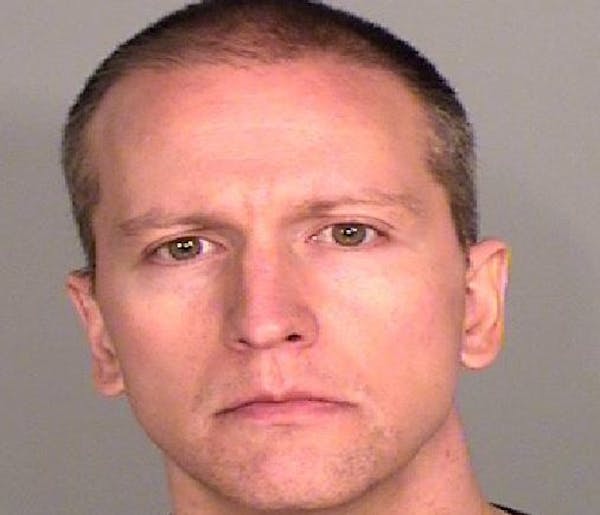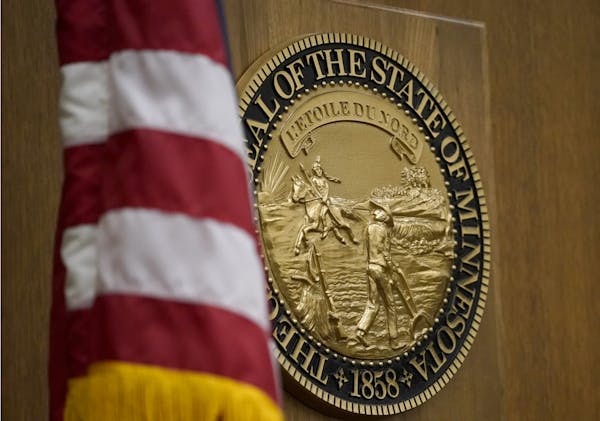George Floyd's DNA, fentanyl and methamphetamine showed up in the forensic analysis of a pill recovered from the second search of the Minneapolis police squad Floyd briefly entered May 25 before dying on the street outside Cup Foods, investigators testified Wednesday.
Fired Minneapolis police officer Derek Chauvin's defense hinges largely on the assertion that Floyd died not from asphyxiation under the officer's knee but from an overdose of illicit drugs, underlying health problems or a combination of both.
The testimony Wednesday afternoon pivoted toward the presence of drugs as three forensic scientists testified for the prosecution about the technical process of gathering and testing evidence from Floyd's Mercedes SUV and Minneapolis police squad 320. The latter is the vehicle former officers J. Alexander Kueng and Thomas Lane were attempting to place Floyd in when Chauvin and his partner Tou Thao arrived at the scene at S. Chicago Avenue and E. 38th Street. Also on the stand was state Bureau of Criminal Apprehension (BCA) special agent James Reyerson, who talked about investigating the scene and reviewed video. The day's testimony started as it had ended late Tuesday, with prosecutor Steve Schleicher's questioning of the state's paid use-of-force witness, Los Angeles Police Sgt. Jody Stiger.
Chauvin is on trial for second-degree murder, third-degree murder and manslaughter. The three other fired officers are to go on trial in August on charges of aiding and abetting him. The trial is at the midpoint of the second week of testimony.
For the first time, the Hennepin County District Court jury heard about the two BCA searches of the two main vehicles at the scene. The first search of the vehicles occurred May 27, two days after Floyd's death. Floyd's Mercedes was searched again in December and the police vehicle again in January.
In her first searches of both, BCA forensic scientist McKenzie Anderson said she was not told to look for drug evidence and none was recovered.
Photographs of the police squad on May 27 showed what appeared to be a white pill on the floor of the rear passenger seat. But Anderson said she did not collect the item because "at the time, I didn't have any information that I was looking for a pill. … I wasn't sure what it was, or if it came off of somebody's shoe, so at the time I didn't give it any forensic significance based on the information that I had [and was] focusing on the blood that was on the back seat."
She searched Floyd's SUV a second time on the request of the attorney general's office. The defense requested the second search of the police vehicle.
After the second search of the squad in January, DNA from one of the pills in saliva was tested against a known sample of Floyd's DNA and it proved a match, Anderson said. The blood samples from the back of the police squad also proved to match Floyd's DNA profile, Anderson said.
The second BCA search of Floyd's SUV in December led to the recovery of two small white pills from the center console and from the floor on the driver's side a box for Suboxone, "a prescription medication used for adults with an opioid addiction," Anderson said. Authorities seized an unopened packet of the drug, as well.
Prosecutor Matthew Frank led Anderson through a series of questions and photographs aimed at showing how the vehicles had been processed and the evidence protected between the two searches. Both vehicles were sealed with tape that was signed and dated, and then stored in a secure, locked facility, she said.
After Anderson, Breahna Giles, a chemical forensic scientist for the BCA, testified that the pills found inside Floyd's SUV contained methamphetamine and fentanyl, an addictive opioid. A partial pill from the squad and other traces of it tested positive for methamphetamine. Another substance was detected, but there was not enough of it to conclusively identify it, she said.
A glass pipe from the SUV also tested positive for THC, the active substance in marijuana, Giles said.
Susan Neith, a forensic chemist at NMS labs in Pennsylvania, provided more specificity on the composition of the pills.
She tested the two pills found in the SUV and the partial pill found in the squad. All three pills contained a fentanyl concentration of less than 1%, which she said is common. The pills contained a methamphetamine concentration of 1.9% to 2.9%, which she said was well below the 90% to 100% methamphetamine usually found, she said.
Floyd's possible drug consumption also arose during defense attorney Eric Nelson's cross-examination of Reyerson.
Nelson played a clip from Kueng's body camera and asked Reyerson if it sounded like Floyd said, " 'I ate too many drugs' " as he was pinned to the ground.
Reyerson said yes, but minutes later, Frank played a longer clip and Reyerson changed his interpretation, saying he believed Floyd was saying, "I ain't do no drugs."
Through Reyerson, the prosecution sought to show that Chauvin kept his weight on Floyd long after he had stopped speaking or moving. He testified that Chauvin's knee went on Floyd's neck at 8:19 p.m.
Reyerson said Floyd fell silent at 8:24 p.m. and stopped moving a minute later. Chauvin's weight was still on Floyd more than 2½ minutes later, when paramedics arrived, Reyerson confirmed.
The special agent also detailed the beginnings of his investigation at City Hall where he took a full-body photograph of Chauvin, which was shown to the jury. Reyerson testified that Chauvin weighed 140 pounds with an additional 30-40 pounds coming from his equipment belt and vest.
In his cross-examination of Reyerson, Nelson also sought to dispel the notion that the stream of liquid on the street visible in bystander video was urine expelled by Floyd as he lay dying. Reyerson acknowledged it could have been condensation from the nearby squad car that continued to run.
In his second day on the stand, Stiger claimed that Chauvin was intentionally inflicting pain on Floyd as a means to control him. Chauvin appeared to use "pain compliance" by squeezing fingers or bringing knuckles together.
Stiger testified that the risks of positional asphyxia are well-established and that even without Chauvin's body weight, Floyd would have been in danger.
As other witnesses have testified, Stiger said the officers had a duty to care for Floyd whose health and breathing were deteriorating.
In his cross-examination, Nelson pressed the "totality of the circumstances" standard for analyzing force. He pushed the argument that Chauvin was working in a chaotic, quickly changing environment while struggling with a powerful, unpredictable suspect who wasn't following commands.
Nelson noted that when Chauvin arrived at the scene, he knew the other officers were struggling with a suspect who was possibly high on drugs and up to 6½ feet tall.
The defense attorney worked to point out the contradictory words and actions of Floyd, who had a foamy substance coming from his mouth but denied taking drugs.
And Floyd kept saying "I can't breathe" but at the same time "he was actively resisting being put in the back of the squad car," Nelson said.
He also brought up the agitated crowd, including the words and actions of witness Donald Williams, the most vocal curbside witness, who was captured on video pacing and swearing at the officers.
As for Chauvin continuing to keep Floyd pinned to the pavement and cuffed, Nelson said an officer needs time to determine what to do next.
Stiger responded that "even when they are resisting, you want to put them in a side recovery position or sit them up" as soon as possible in order to avoid creating a threat to a suspect's life.
Rochelle Olson • 612-673-1747
Paul Walsh • 612-673-4482
Chao Xiong • 612-270-4708
Charges: Man picked out woman's St. Paul home at random, raped her at gunpoint and robbed her
Gunfire from vehicle kills 14-year-old in SUV at northeast Mpls. gas station


